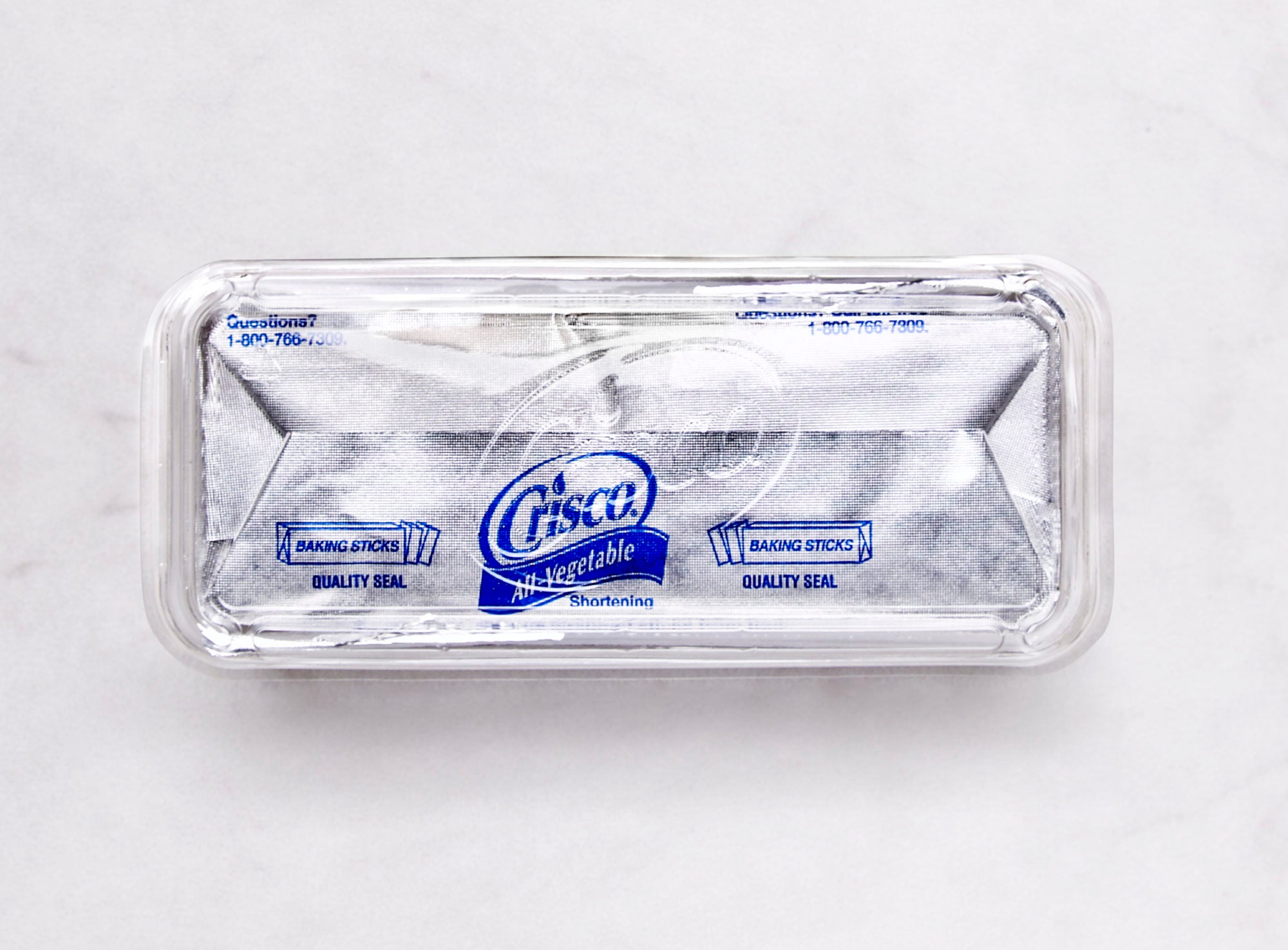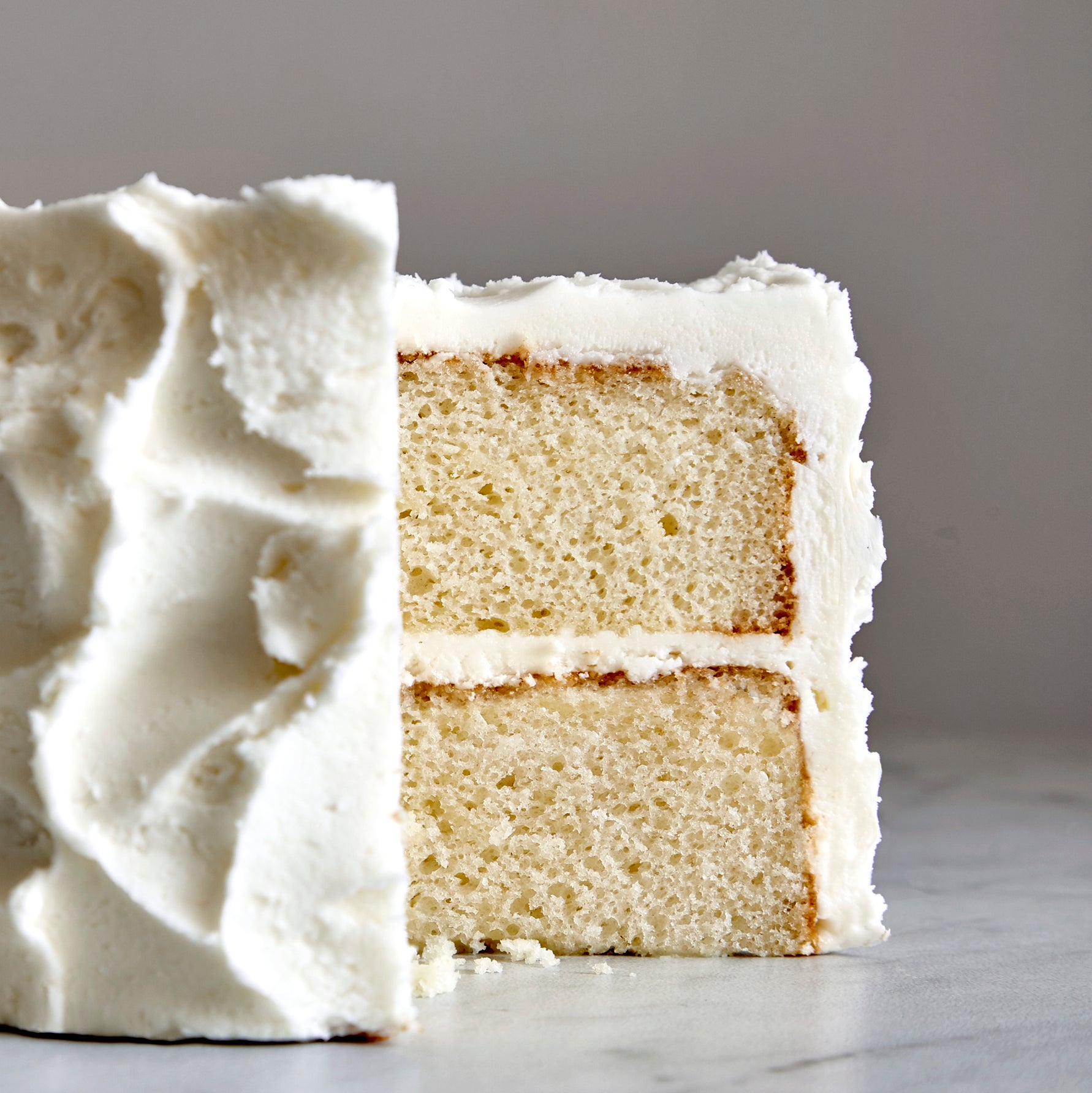
For years, bakers have turned up their noses at Crisco as a cheap imitation of butter. But because of its high melting point and high burning point, vegetable shortening can pull off some tricks that are hard to do with oil or butter.
That blissful first bite from a slice of really good apple pie, its flaky crumbs finding a second home on your shirtfront. A dozen perfectly round spice cookies, sitting pretty on a sheet pan pulled fresh from the oven. A layered white birthday cake light as air, tender on the tongue, and remind of a perfect childhood. What’s the invisible secret ingredient that all of these have in common? Shortening. Quelle horreur!
Stop cringing and hear me out.
Though we might associate it with the canister of waxy white Crisco our grandmothers kept in the cupboard year-round, the word “shortening” technically applies to all solid fats. It was synonymous with lard up until 1869, when margarine was invented and eventually stole the crown. These days we think almost exclusively of hydrogenated vegetable oil when we hear “shortening,” and it has been that way ever since Procter & Gamble introduced Crisco in 1911.
Cheaper to produce than lard, shortening made baking a beautiful pie for Sunday dinner or a stark-white birthday cake a breeze for those living anywhere, on any income, with just a few staple ingredients on hand. Available and affordable when butter was not—during the Great Depression and times of food rationing in both World Wars—its neutral flavor, long shelf life, and high smoke point quickly made it the go-to for cooks and bakers.

In the early 1990s, research confirmed links between trans fats and increased incidence of high cholesterol and heart disease. Though naturally present in minuscule amounts in some dairy and meat, the trans fat that caused major upheaval all over the world was the type born when hydrogen is added to vegetable oil, creating—you guessed it—vegetable shortening. Eventually, in 2007, Procter & Gamble reformulated its best-selling Crisco into a product containing less than .5 grams of trans fat per serving, thereby enabling it to meet the FDA requirement for labeling a product “trans fat–free.”
The same qualities that made shortening a practical staple during the first half of the 20th century make it capable of some pretty impressive feats of science today. The high melting point (115°F compared to butter’s 98.6°F) means that icing won’t wilt and drip down the sides of the cake that you bring to a picnic, and cookies won’t spread in the oven. It means you can handle your pie dough without wondering nervously if the heat from your hands will melt the butter and turn the end result gummy.
Butter made in the United States contains approximately 16 percent water; shortening has none. During baking, water turns to steam, which aids in the development of gluten. If you use shortening instead, you’ll have less gluten, and therefore softer cakes, and cookies that remain soft and cakey even when they’ve cooled down. In my favorite recipe (below) for a cloud-soft white cake, the pure fat in shortening makes up for the lack of egg yolks, an ingredient that helps the cake develop the beautifully moist, velvety, and tender crumb we’re all looking for.
Professional bakers have access to high-ratio shortening, which contains more emulsifiers than the type available to the layperson at the corner store and which produce a smooth, stable, and less greasy frosting ideal for wedding cakes and the like. But if you don’t have access to the high-ratio version, Crisco will work. The absolute fastest frosting recipe to make, given below, is a simple mix of store-bought shortening, powdered sugar, a little vanilla, and a little salt. No waiting for butter to soften, and it is ready in a pinch. But there are considerations to keep in mind. Please see the recipe headnote for tips on working with this type of frosting.
All this said, I’m not advocating a schmear of shortening on your morning toast or proclaiming it the new coconut oil. Nothing made with shortening is a health food. Hell, baked goods aren’t health foods, whatever the fat may be. As the cliché goes, everything in moderation. But there are those recipes requiring that special touch only pure fat can give: the flake to the crust, the lift to the cookie, the crumb to the cake. And when that’s the case, I don’t hesitate to pull the tub from the shelf and get baking.